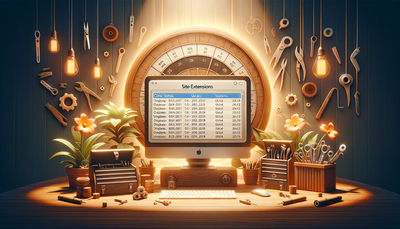Handling Website Downtime: Maintenance Best Practices
Website downtime due to maintenance is an inevitable part of managing an online presence. While necessary for improvements and updates, it can be disruptive to users and potentially harm your business if not handled properly. This article delves into best practices for managing website downtime during maintenance periods. We'll explore effective planning strategies, communication techniques, and methods to minimize user impact. By implementing these practices, you can ensure smoother maintenance processes, maintain user trust, and reduce potential negative consequences of downtime. Whether you're a small business owner or part of a large organization, these insights will help you navigate the challenges of website maintenance with confidence and professionalism.Table of Contents:

Planning for Maintenance Downtime
Effective maintenance downtime starts with thorough planning. Begin by identifying the least disruptive time for your maintenance based on your website analytics. Typically, this is when your site experiences the lowest traffic. For global audiences, consider time zones and choose a time that affects the fewest users possible.Next, create a detailed maintenance plan. This should include a timeline of tasks, personnel assignments, and a step-by-step procedure for the maintenance process. Having a clear plan helps ensure efficiency and reduces the likelihood of unexpected issues. It's also wise to have a rollback plan in case something goes wrong during the maintenance.
Lastly, test your maintenance procedures in a staging environment before implementing them on your live site. This allows you to identify and resolve potential issues beforehand, minimizing the risk of prolonged downtime or complications during the actual maintenance period.
Do you need a website? Want to build a website but don't know where to start? Our website builder is the perfect solution. Easy to use, and with the ability to customize to fit your business needs, you can have a professional website in no time.
Communicating with Users
Clear and timely communication is crucial when managing website downtime. Inform your users well in advance about the scheduled maintenance. This can be done through various channels such as email newsletters, social media posts, and notifications on your website.When crafting your message, be transparent about the reason for the maintenance, its expected duration, and how it might affect users. If possible, provide alternative ways for users to access important information or services during the downtime.
During the maintenance period, update your website's homepage with a custom maintenance page. This page should explain the situation, provide an estimated completion time, and offer ways for users to stay informed about the progress. Consider including contact information for urgent inquiries.
After the maintenance is complete, follow up with your users. Thank them for their patience, highlight any improvements made, and address any issues that may have arisen during the process. This follow-up helps maintain trust and shows your commitment to user satisfaction.
Minimizing Disruption
While some downtime may be unavoidable, there are strategies to minimize disruption to your users. One effective approach is to implement rolling updates. This involves updating your website in sections, allowing some parts to remain accessible while others are under maintenance.Another strategy is to use a content delivery network (CDN) to serve cached versions of your website during maintenance. This can help maintain some level of accessibility, especially for static content.
For e-commerce sites, consider setting up a temporary landing page that allows users to browse products and add items to their cart, even if they can't complete purchases during the maintenance period. This helps maintain user engagement and prevents lost sales opportunities.
If your website relies on user-generated content or frequent updates, consider implementing a read-only mode during maintenance. This allows users to access existing content while preventing new submissions or changes.
Building a website with SITE123 is easy
Monitoring and Quick Response
During the maintenance period, it's crucial to actively monitor the process and be prepared for quick responses to any issues. Set up real-time monitoring tools to track the progress of your maintenance tasks and identify any unexpected problems.Have a dedicated team on standby during the maintenance period, ready to address any emergencies. This team should have clear roles and responsibilities, as well as a defined escalation process for serious issues.
Regularly update your maintenance page with progress reports. If the maintenance is taking longer than expected, communicate this to your users promptly, providing a revised completion estimate. Transparency in such situations helps maintain user trust.
After the maintenance is complete, conduct thorough testing to ensure all systems are functioning correctly before fully reopening the site to users. This final check can prevent frustration caused by lingering issues post-maintenance.
Learning and Improving
Each maintenance period provides an opportunity to learn and improve your processes. After completion, conduct a post-mortem review with your team. Discuss what went well, what challenges were faced, and how to improve for future maintenance sessions.Gather feedback from users about their experience during the downtime. This can provide valuable insights into the effectiveness of your communication and the impact of the downtime on your audience.
Use the lessons learned to refine your maintenance procedures. This might involve updating your communication strategies, adjusting your timing, or improving your technical processes. Continuous improvement in your maintenance practices will lead to smoother operations and better user experiences over time.
Consider investing in technologies or strategies that can reduce the need for full site downtime in the future. This might include more robust hosting solutions, improved backup systems, or advanced update mechanisms that allow for seamless transitions.





